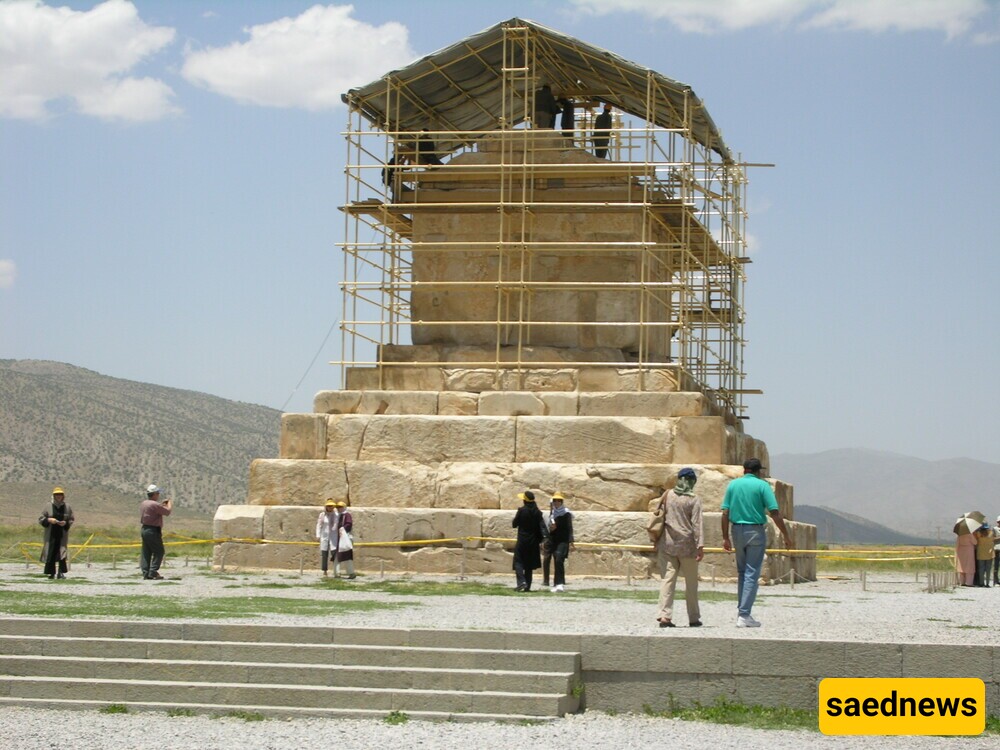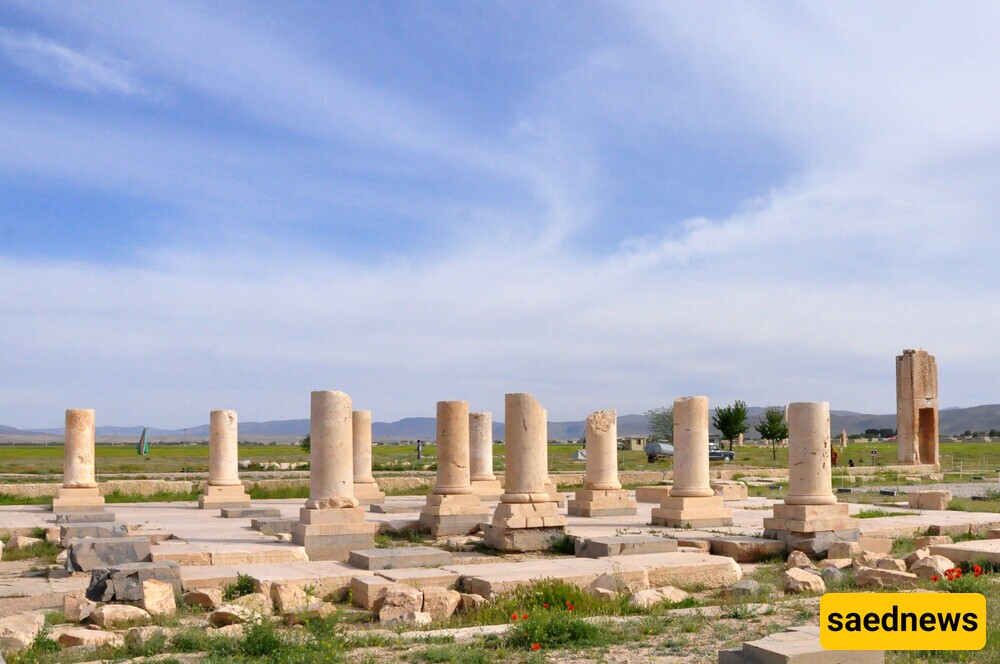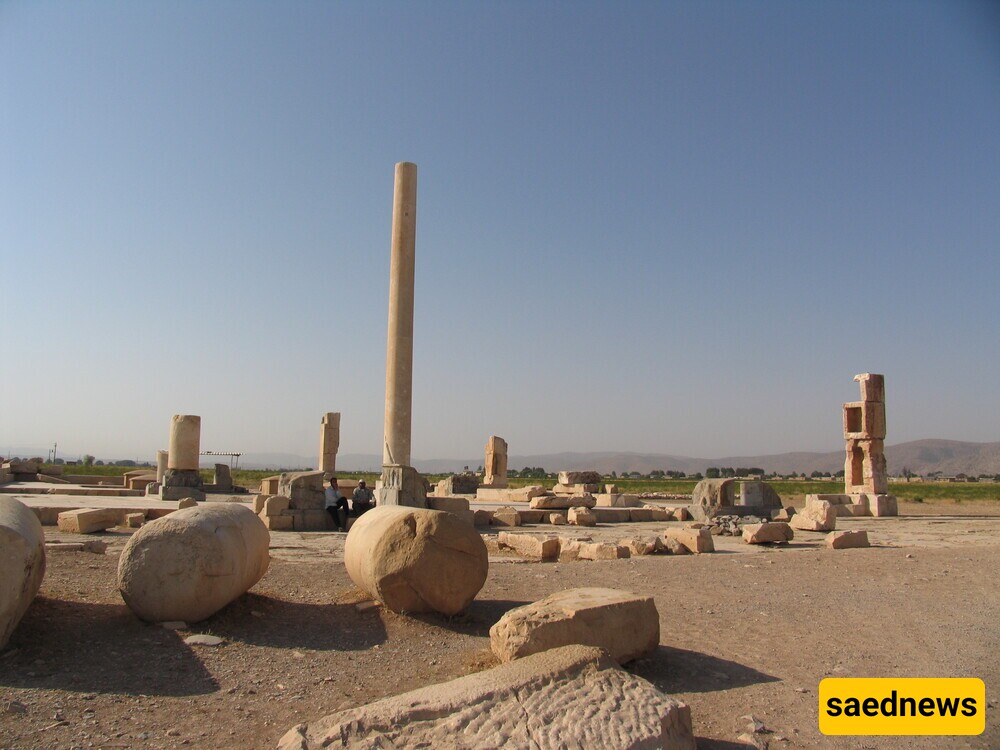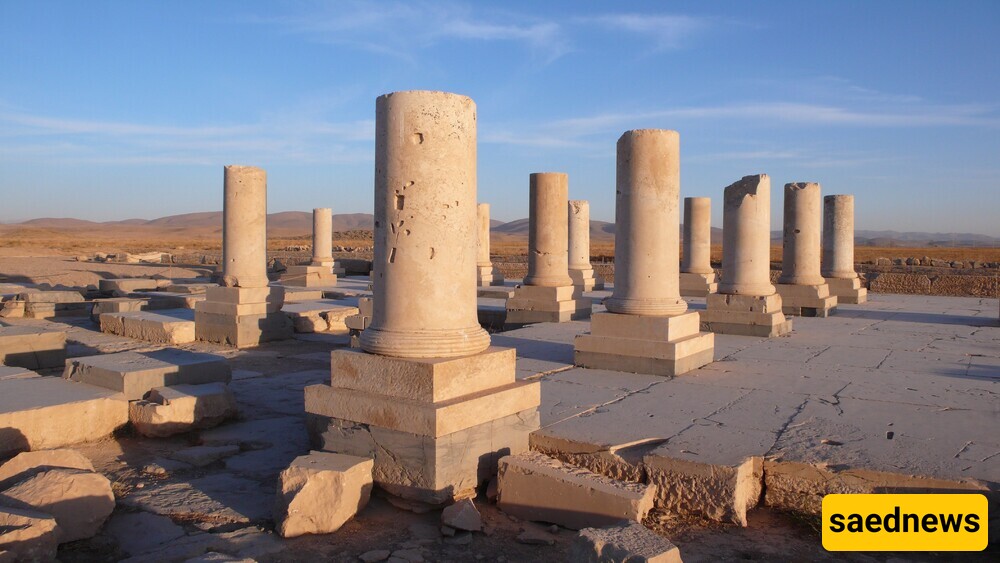SAEDNEWS: Pasargadae, the ancient capital of Cyrus the Great, is a testament to Persia’s rich history. This UNESCO site showcases the architecture and legacy of one of history’s great empires. Each year, thousands visit to admire its majestic monuments and honor the visionary founder who shaped a civilization.

According to SAEDNEWS, Pasargadae, founded by Cyrus the Great in the Sixth century BCE, marks the birthplace of the Achaemenid Empire, one of the most powerful empires of the ancient world.
Established as the capital of this early Persian empire, Pasargadae reflects the unique vision of Cyrus, who sought to build a society that valued tolerance, justice, and cultural integration. Cyrus is known for his progressive rule, and his tomb within Pasargadae symbolizes not only his achievements but also his legacy of peace and unity.
Located in the Fars Province of Iran, about one hundred and forty kilometers from modern-day Shiraz, Pasargadae sprawls over a vast area and showcases early Achaemenid architecture and planning. The site’s layout was innovative for its time, combining elements of Mesopotamian, Elamite, and Urartian influences. This architectural blend set a standard for Persian architecture, influencing styles for centuries to come.

The tomb of Cyrus the Great stands as the most iconic structure within Pasargadae. Built from massive limestone blocks and set atop a series of steps, the tomb has a strikingly simple yet powerful design. It was originally built to be surrounded by gardens, which historians believe symbolized the “paradise” gardens of Persia, an early form of garden design that would later inspire gardens around the world. The tomb itself reflects the influence of ancient Mesopotamian ziggurats, indicating a fusion of cultural designs that underscores Cyrus’s vision of a united empire.
Another remarkable feature of Pasargadae is the Tall-e Takht, or “Throne Hill,” an elevated fortified platform that overlooks the surrounding plains. This impressive stone structure served as a ceremonial terrace and is believed to have been used for public gatherings and important state functions. The craftsmanship evident in Tall-e Takht’s design and construction demonstrates the architectural ambition and skill of early Achaemenid engineers.
The city also features several palaces, including the Audience Hall and the Residential Palace, which give visitors a glimpse into the grandeur and sophistication of the Achaemenid court. The palaces are adorned with intricate carvings, and their columned halls represent the architectural style that would later be seen in Persepolis. These structures, though weathered by time, offer a window into the ceremonial life and administrative prowess of the empire’s early rulers.

Pasargadae holds more than historical significance; it represents an enduring symbol of Iranian heritage and identity. Cyrus’s legacy as a just and visionary ruler is cherished not only within Iran but worldwide. His establishment of the Cyrus Cylinder, often considered the first charter of human rights, underscores his commitment to tolerance and respect for all cultures under his rule. For Iranians and admirers around the globe, Pasargadae embodies the ideals of freedom and cultural integration that characterized Cyrus’s reign.
The UNESCO World Heritage designation has helped safeguard Pasargadae, but preservation efforts face challenges due to natural and environmental factors. The limestone structures have been affected by erosion over the centuries, and modern efforts are focused on maintaining the integrity of the site for future generations. Iranian cultural authorities, in cooperation with UNESCO, have undertaken projects to stabilize and restore key monuments, including protective structures around Cyrus’s tomb to shield it from environmental damage.

Pasargadae draws visitors from around the world, each eager to experience the timeless beauty and history of the site. The journey through Pasargadae begins with Cyrus’s tomb and moves through the palace grounds and the Tall-e Takht, offering a profound connection to the past. For many, the serene surroundings and vast landscapes contribute to a reflective experience, as they walk in the footsteps of a ruler whose ideas of tolerance and unity still resonate today.
Guides at Pasargadae help bring the history of each structure to life, narrating stories of Achaemenid leaders, architectural marvels, and cultural exchanges that enriched the empire. The site’s informative displays, combined with its breathtaking setting, make Pasargadae an unforgettable destination for history enthusiasts, archaeologists, and travelers alike. Each monument offers insights into a civilization that valued both strength and compassion, making Pasargadae a place of both learning and inspiration.
Pasargadae remains a powerful testament to the vision of Cyrus the Great and the enduring spirit of the Achaemenid Empire. Through its architectural wonders and historical significance, Pasargadae continues to inspire admiration for Persia’s cultural heritage and the ideals that shaped it. As visitors walk through its ancient pathways and behold the tomb of Cyrus, they are reminded of a leader who valued unity, justice, and respect for all cultures. Pasargadae, preserved for the world to see, stands as a proud symbol of Iran’s illustrious past and a beacon of its commitment to preserving history.

